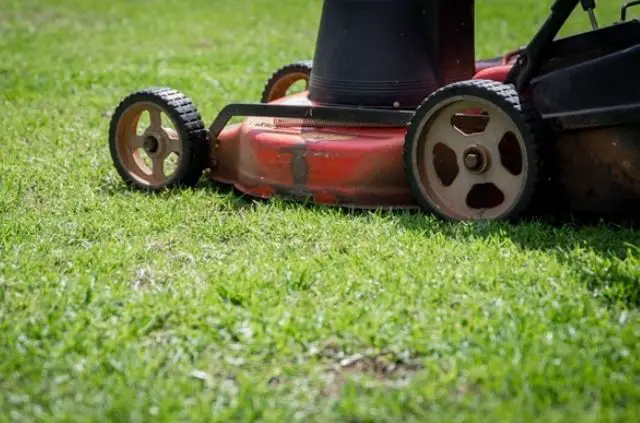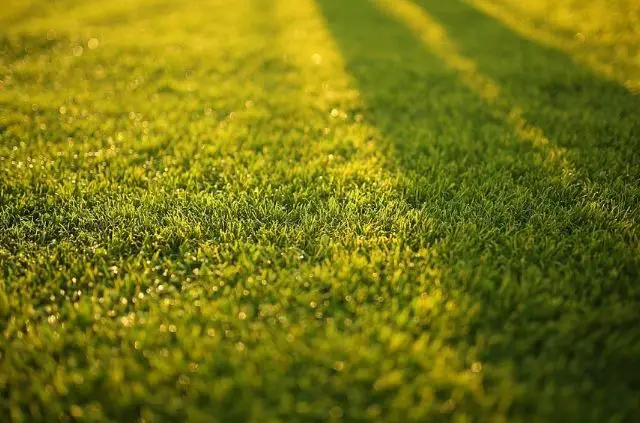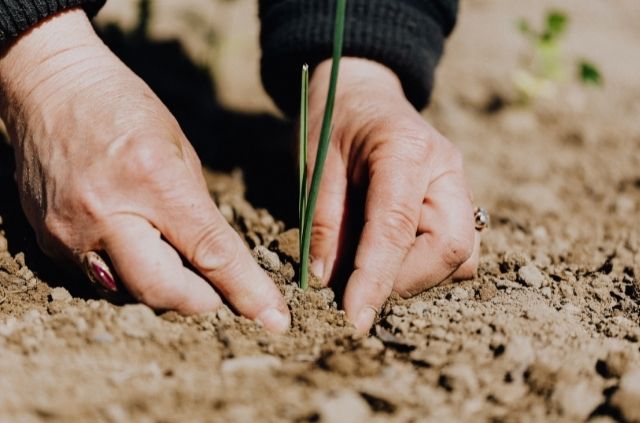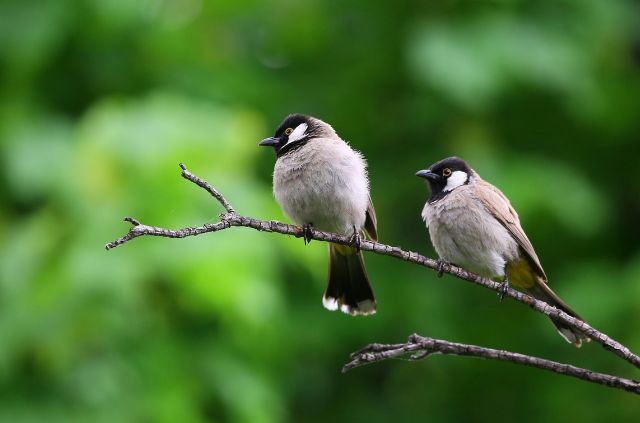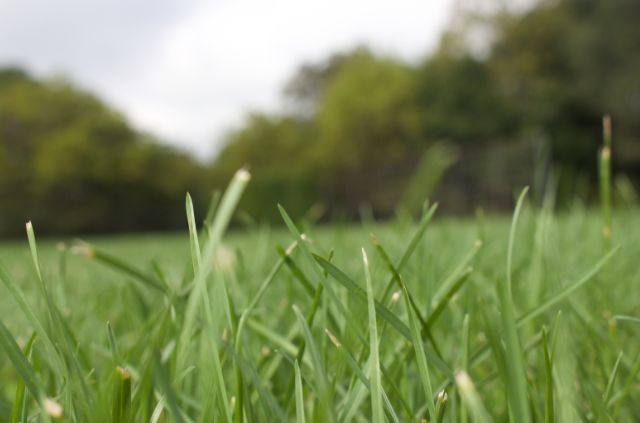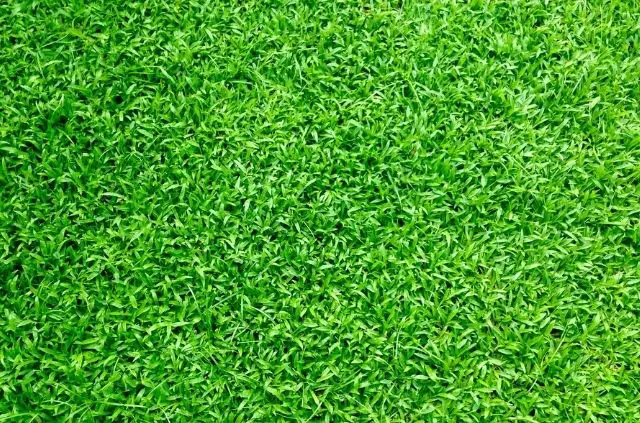Should You Water After Mowing?
Mowing and watering your grass is considered to be a regular part of yard maintenance. But should you water after mowing? Continue reading to learn the answer to this common lawn care question.
Yes, you can water right after mowing – but the answer really comes down to the condition of your grass. If the lawn is brown, or has trouble growing grass in some areas, you should consider watering.
Irrigating your lawn is important, especially in the summer months. If you frequently mow in the morning, it’s always a good idea to water after – due to more of the roots being exposed to sunlight.
How Soon After Cutting Grass Should You Water?
This answer really depends on where you live. During the hot summer months, you should consider watering the grass right after it has been cut. This is especially important if you mow in the morning.
As I mentioned in the sections above, cutting the grass will naturally expose more roots. Regardless of how short your mower height is set to, there will be a higher chance for sun to stress the grass.
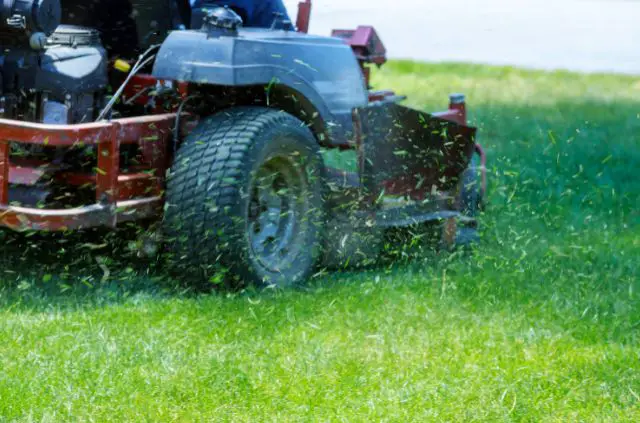
When you water right after mowing in the morning, your lawn will be protected from the sun for the entire day. Plus, in the morning temperatures are cooler and there will be less wind – which will better help water to soak into the soil.
During the spring and fall, watering after mowing isn’t required. There tends to be more rainfall around this time of year and the sun isn’t as strong. You can check out the Sun Safety Monthly Average UV Index for more information.
Understanding Dormant Grass
If you live somewhere with frequent droughts, you’re probably familiar with dormant grass. This is when sections of the lawn can turn brown and yellow. Without consistent irrigation, the grass will become stressed from heat and enter dormancy.
It helps to know that during this time your grass isn’t dead and it can even turn green again with the right conditions. I’ve personally gone weeks without mowing dormant sections of my lawn throughout July and August.
That’s where watering can help. Consistent water will seep into the soil and provide grass roots with nourishment. But it should always be done after mowing. Below are the steps you should follow that will promote healthy grass all year.
How to Water After Mowing
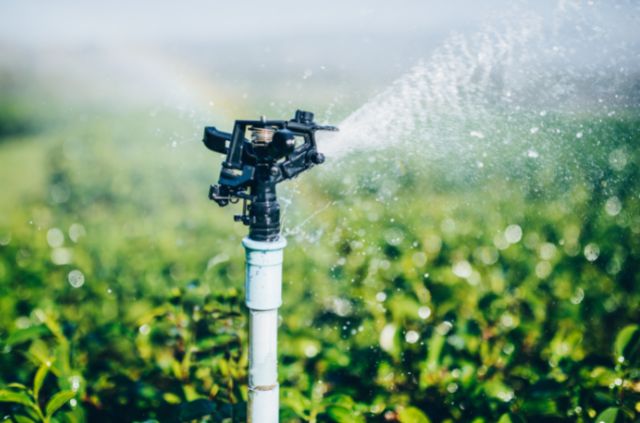
1. Preparation
A healthy lawn starts with preparation. Before turning on your lawn mower, walk around the yard and pick up any sticks, rocks, and other large debris. These objects will get in your way when cutting the grass and they can even damage the lawn mower.
You should also level out any uneven soil on the lawn. This doesn’t have to be a big job, but using a tamper tool can help flatten high spots. This will also prevent tearing up grass when your lawn mower passes over them.
2. Set the Mower Height
Setting the correct mower height is another important step before you begin. In general, it helps to mow tall in hot temperatures and low in the cooler months. But you should also adjust the height depending on how your yard looks.
If your lawn has brown and yellow spots (like mine did) you will need to set a higher mower height. And for grass growing normally, set the height a little lower. Doing this will help keep the surface more even.
3. Mow
Now that debris have been cleared from the yard and your cutting height is set, it’s time to mow the lawn. The most efficient method is to start with the edges first, making a circle around the entire perimeter.
Then you will want to pick a pattern and stick with it. One of the most common (and easiest) patterns is stripes. You’ll do one pass with the mower, before making a 180-degree turn for the next pass. Rinse and repeat.
4. Water
Let’s revisit the following question: should you water after mowing? If you have a stressed out lawn from summer heat, then yes. Running your sprinkler system is the best solution for bringing grass out of dormancy.
Set your sprinklers to run in the morning only. I often walk around my neighborhood and see people running their irrigation systems at night. Make sure to avoid doing this, because having wet grass at night can promote fungus growth.
5. Make Adjustments
You will notice that watering can be similar to setting the mower height. In that some areas of your lawn will need more water to promote growth. Spots with brown grass should be watered heavily and areas with green grass can be watered less.
So, make sure to adjust your irrigation system accordingly. If you don’t have a sprinkler system, use a hose attachment to water dormant spots. Do this for about 20-30 minutes each morning, until the grass returns to normal.
Should You Water Before Mowing?
Watering after cutting the lawn is one thing, but should you water before mowing? I would highly recommend avoiding this at all costs. In fact, watering before mowing will cause more harm than good.
For starters, mowing wet grass can damage your yard. Lawn mowers are heavy pieces of machinery and they are more likely to slide on a slippery surface. If you apply the brakes on a slight incline, it will tear up fresh grass and leave mud tracks.
But cutting wet grass can also damage your lawn mower. If you’ve ever done this, you know what I’m talking about. Damp grass will clump up and get clogged in the blades. It will make for a messy job and leave you with more work when finished.
Final Thoughts
Hopefully this article has taught you that watering after mowing is only necessary in the summer months. During this time more stress is placed on the grass due to higher levels of heat and humidity.
If your lawn looks brown and yellow in some areas, it has already entered into dormancy. The good news is that grass this color isn’t dead and it can be revived with consistent irrigation.
Watering after mowing is best done in the early morning, as it will protect grass roots from the midday sun. And make sure to avoid watering at night, because doing so can lead to fungus.
Search Terms
- Should you water after mowing?
- How to water after mowing

